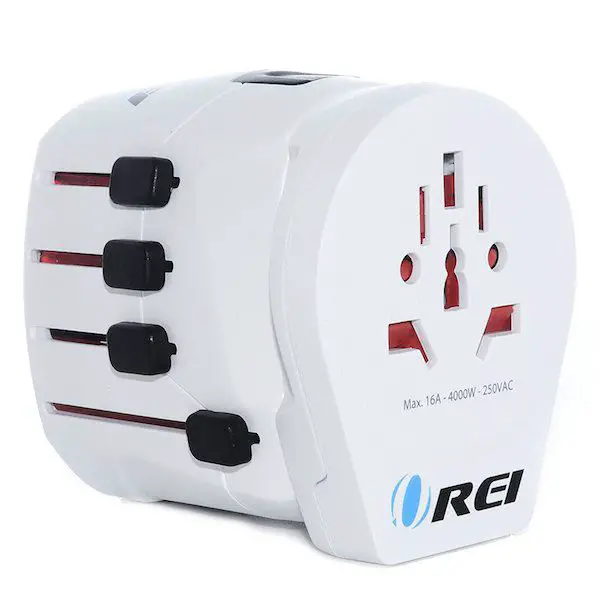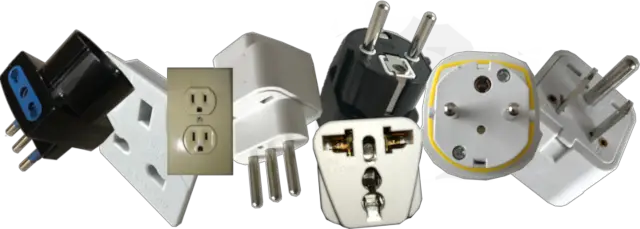Electricity 101 for Travelers: Voltage, Frequency, and Grounding Explained
Taylor Watts - December 15, 2023
 Essential guide to understanding electricity for travelers
Essential guide to understanding electricity for travelers
Embark on an electrifying journey of discovery with "Electricity 101 for Travelers." Unravel the mysteries of voltage, frequency, and grounding in this must-read guide for every tech-savvy traveler.
Electricity 101 for Travelers: Voltage, Frequency, and Grounding Explained
By Taylor Watts
Introduction
Hello, globe-trotters! 🌍✈️ Are you ready to dive into the electrifying world of travel? As a seasoned wanderer and an unspoken expert in the electrical realm, I'm here to guide you through the essentials of electricity when you're on the move. Let's talk about the nuts and bolts - voltage, frequency, and grounding - and how they impact your gadgets abroad. 💡🔌
Voltage Variations: The Power Puzzle
What is Voltage?
Voltage is essentially the pressure of electricity in a circuit. Think of it like water pressure in a pipe – the higher the pressure, the stronger the
flow.
🌟 Fun Fact: Different countries operate on different voltage levels. For example, in the USA, the standard is 120 volts, while in many European countries, it's 230 volts.
 A power supply that can handle from 100V up to 240V
A power supply that can handle from 100V up to 240V
Why Does it Matter?
Your devices are designed for a specific voltage. Plugging a 120-volt hair dryer into a 230-volt outlet can be disastrous (and I'm speaking from
experience! 💇♀️💥). Always check the voltage specifications of your gadgets before you travel.
Frequency Fluctuations: The Invisible Dance
What is Frequency?
Frequency, measured in hertz (Hz), is the rate at which electricity alternates. In simpler terms, it's the rhythm of the electrical current.
🌟 Notable Note: Most countries use either 50 Hz or 60 Hz. The U.S. dances to a 60 Hz tune, while Europe grooves to 50 Hz.
Does Frequency Affect Your Devices?
Most modern electronics can adapt to different frequencies, but some appliances, like clocks and electric motors, might get out of sync or run less
efficiently.
Grounding: The Safety Net
What is Grounding?
Grounding is an essential safety feature that prevents electric shock. It's like an emergency exit for electricity, directing excess current safely
into the earth.
Why is Grounding Important for Travelers?
Different countries have different grounding methods. Some use 3-prong outlets, others 2-prong. Always ensure your adapter matches the local grounding
system to avoid any shocking surprises! ⚡🙅♀️
 Protected Adapter, notice the red plastic, that is the safety mechanism and it is grounded too
Protected Adapter, notice the red plastic, that is the safety mechanism and it is grounded too
Adapting to Adapt: Travel Adapters and Converters
Travel Adapters: Your Connectivity Companion
Travel adapters don't change the electricity; they merely help your plug fit into a foreign outlet. They're essential for charging your devices
abroad. Remember, one size does not fit all – research the plug type needed for your destination.
Converters and Transformers: Voltage Virtuosos
If your device's voltage doesn’t match the destination’s voltage, you'll need a converter (for short-term use) or a transformer (for prolonged use).
Be cautious, as using the wrong type can damage your devices.
🌟 Tip Time: Check if your device is dual voltage (it will be marked '110-240 volts'). If so, you may only need an adapter, not a converter.
Practical Tips: A Handy Checklist
- Research Ahead: Know the voltage, frequency, and plug type of your destination.
- Label Your Gear: Mark your devices and adapters with their voltage and frequency specs for easy reference.
- Safety First: Choose adapters and converters with safety certifications.
- Test Before Travel: Try out your adapters and converters before your trip to avoid any unwelcome surprises.
- Pack Smart: Bring a multi-socket extension lead to charge multiple devices with one adapter.
The Journey Continues: Understanding Surge Protectors and Power Strips
Surge Protectors: Your Guard Against Power Surges
Surge protectors safeguard your devices from sudden spikes in voltage. However, not all surge protectors work universally. Verify that yours can
handle the voltage in your destination.
Power Strips: Multiplying Your Outlets
Power strips are convenient for charging multiple devices. However, ensure they match the local voltage and frequency requirements to prevent
overload.
Frequently Asked Questions
Can I use my hair straightener abroad?
Check the voltage and frequency compatibility. If it’s not a match, you’ll need a converter.Why did my charger stop working overseas?
It might be due to a mismatch in voltage or frequency. Always check your device’s specifications.Is it safe to use a two-prong adapter in a three-prong outlet?
It’s not advisable as it bypasses the grounding, increasing the risk of electric shock.
Wrapping It Up (But Not Concluding Yet)
Understanding the basics of voltage, frequency, and grounding is crucial for a hassle-free travel experience with your electronic companions. With the right knowledge and gear, you can keep your devices safe and functional, no matter where your adventures take you. Stay tuned for more insights in my upcoming articles, where we'll delve deeper into the world of travel and technology. Safe travels and happy charging! ⚡🌏💼
Taylor Watts is a seasoned traveler and an undercover electrician, sharing practical tips and insights for your electrifying adventures.
For more electrifying travel tips, visit WhatPlug.info. 🌐🔌
↬ a link from your website helps too.
